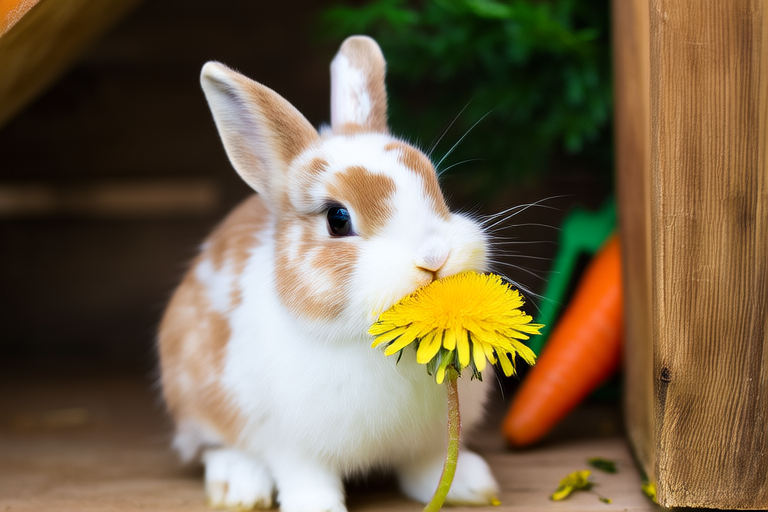From Hopping to Napping: Daily Life With a Dutch Dwarf Rabbit
Welcome to the world of Dutch Dwarf Rabbits! These tiny, delightful creatures have captured the hearts of many pet lovers with their charming personalities and unique behaviors. In this article, we’ll explore the daily life of a Dutch Dwarf Rabbit, delving into their energetic hopping periods and peaceful napping times. We’ll also discuss their care requirements, suitable habitats, dietary needs, grooming routines, and tips for interacting with these small rabbits. Whether you’re a seasoned rabbit owner or just considering adding one to your family, this guide will provide valuable insights into what it’s like to live with a Dutch Dwarf Rabbit.
The Enthusiastic Hoppers
Dutch Dwarf Rabbits are known for their high energy levels and love for hopping around. Their playful nature makes them incredibly entertaining to watch as they leap from one spot to another, exploring their surroundings with curiosity and joy. These little bundles of energy are often seen bounding through their living spaces, whether it’s a spacious indoor area or a secure outdoor enclosure. Their hopping sessions can last anywhere from 30 minutes to an hour, during which they seem to be constantly on the move.
One of the most endearing traits of Dutch Dwarfs is their ability to hop gracefully despite their small size. Their agility and coordination are impressive, making each hop a sight to behold. They use their powerful hind legs to propel themselves forward, sometimes even performing acrobatic twists mid-air. Watching them hop is not only fun but also provides excellent exercise for both the rabbits and their owners.
The Peaceful Nappers
After their energetic hopping sessions, Dutch Dwarf Rabbits transition into peaceful napping times. These small creatures require ample rest to maintain their health and vitality. On average, they spend about half of their day sleeping, which means they need a quiet, comfortable space where they can relax without disturbances.
In our home, we’ve observed that our Dutch Dwarf, named Buttons, has a favorite nap spot – a cozy blanket in the corner of her play area. She curls up into a tight ball, tucking her paws under her body, and drifts off into a deep sleep. During these moments, she appears completely at ease, her breathing slow and steady. It’s heartwarming to see her enjoy such peaceful moments after her active playtime.
Suitable Habitats
Creating a safe and comfortable habitat is crucial for the well-being of Dutch Dwarf Rabbits. Indoor living spaces should be large enough to allow for plenty of movement and exploration. A minimum of 4 square feet per rabbit is recommended, but more space is always better. Provide sturdy toys, tunnels, and platforms for climbing and hiding. Outdoor enclosures should be predator-proof, with secure fencing and a covered area to protect against harsh weather conditions.
We’ve found that placing hay racks and chew toys strategically throughout their living space encourages natural foraging behavior. This not only keeps them mentally stimulated but also helps wear down their teeth, which grow continuously. Additionally, providing a litter box filled with appropriate bedding material promotes good hygiene and reduces odors.
Dietary Needs
A balanced diet is essential for maintaining the health of Dutch Dwarf Rabbits. Their primary food source should be high-quality hay, which aids digestion and supports dental health. Fresh vegetables, fruits, and pellets formulated specifically for rabbits should be offered in moderation. Avoid feeding them foods high in sugar or fat, as these can lead to obesity and other health issues.
One of the joys of having a Dutch Dwarf is watching them nibble on fresh greens. Our rabbit, Buttons, loves munching on romaine lettuce and parsley. However, it’s important to introduce new foods gradually and monitor for any adverse reactions. Water should always be available, and it’s best to provide it in a water bottle with a sipper tube to prevent spillage.
Grooming Routines
Regular grooming is necessary to keep Dutch Dwarf Rabbits clean and healthy. Brushing their fur weekly helps remove loose hair and prevents matting. During shedding seasons, more frequent brushing may be required. Bathing should be avoided unless absolutely necessary, as it can stress the rabbit and disrupt their natural oils.
We’ve learned that trimming their nails every few weeks is also important to prevent overgrowth, which can cause discomfort and difficulty walking. It’s advisable to consult with a veterinarian or experienced breeder for proper nail trimming techniques. Additionally, checking their ears and eyes regularly for signs of infection or irritation ensures early intervention if any issues arise.
Companionship Aspects
Dutch Dwarf Rabbits thrive on companionship and social interaction. They form strong bonds with their human caregivers and can become quite affectionate. Spending quality time with them through play sessions, grooming, and simply sitting nearby fosters trust and strengthens the bond between you and your furry friend.
Our experience has shown that Dutch Dwarfs enjoy being part of family activities. They can join you while watching TV or reading a book, provided they have a safe space nearby. However, it’s important to remember that rabbits are prey animals and may feel anxious in loud or chaotic environments. Creating a calm and predictable routine helps them feel secure and content.
Tips for Interacting with Dutch Dwarf Rabbits
Handling Dutch Dwarf Rabbits requires gentleness and patience. Always support their bodies when picking them up, ensuring their hind legs are securely supported. Avoid lifting them by their ears or scruff, as this can cause injury. Encourage gentle petting and positive reinforcement training to build confidence and trust.
We’ve found that offering treats during training sessions is an effective way to teach basic commands and tricks. Buttons enjoys receiving small pieces of apple or carrot as rewards for good behavior. Positive interactions not only enhance bonding but also contribute to the overall happiness and well-being of your Dutch Dwarf Rabbit.
